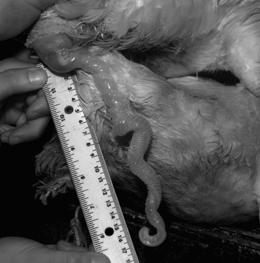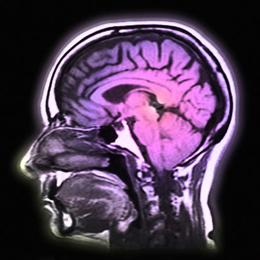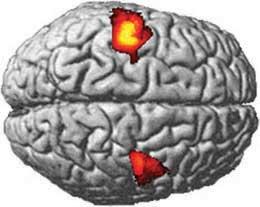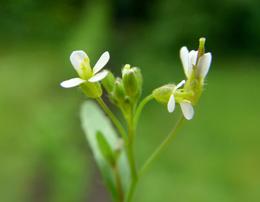Law & Disorder - Science News
Physicists keep trying to explain why time flows one way

Before the BangSome theories propose that the known universe is just a baby bubble of spacetime that budded off a preexisting space. Other baby universes might have formed the same way, but some with time flowing in the opposite direction, preserving time symmetry for the entire cosmos. Kelly Ann McCann In a famous passage from his 1938 book
The Realm of Truth, the Spanish-American philosopher George Santayana compared time to a flame running along a fuse. The flame’s position marked the present moment, speeding forward but never backward as the fuse disappeared behind it. “The essence of nowness,” Santayana remarked, “runs like fire along the fuse of time.” Each spark along the fuse represents one of the “nows” that transform the future into the past and “combine perfectly to form the unchangeable truth of history.”
It’s far from a perfect analogy. A flame flitting along a wire doesn’t fully capture the quirky features of time that perplex physicists pondering relativity and quantum mechanics, for example. But Santayana’s sparks do illustrate one of time’s most enduring and puzzling properties — its irreversibility.
Time always, always marches forward into the future. You can travel into the future just by breathing, but the past is accessible only in memories and other records. Time flies in one direction — like an arrow — and never makes a U-turn. Popcorn never unpops, eggs never unscramble and you can’t put an exploded stick of dynamite back together again.
“This difference between the past and the future shows up in physics, it shows up in philosophy, it shows up in biology and psychology and all these different things,” says theoretical physicist Sean Carroll of Caltech. “The arrow of time absolutely pervades the way that we think about the universe.”
But peculiarly, the physical laws governing the universe do not recognize this temporal imperative. Equations describing the forces that guide matter in motion work just as well going backward in time as forward. A microworld video of bouncing molecules would need time stamps to distinguish forward from reverse — on a molecular scale, time has no direction. In the big world of bouncing basketballs, though, the clock is always running, and its hands never reverse the direction of their rotation.
For more than a century, the emergence of time’s arrow from time-blind laws of nature has confused physicists and philosophers alike. And even though it seems that more solutions for this mystery have been proposed than apps for the iPhone, new attempts at explanation continue to appear as regularly as clockwork. Some of the latest proposals suggest that time’s mystery may be an essential subplot in an even grander drama involving the origin of the cosmos itself.
Time gets messy
Although there’s no complete agreement on the precise source of time’s arrow, most experts concur that it has something to do with entropy, the ever-increasing disorder of things required by the second law of thermodynamics. As time goes by, disorder increases (or at least stays the same) in any system isolated from external influences.
Sadly, though, explaining time’s arrow by appeal to the second law alone doesn’t solve the puzzle. Sure, rising entropy defines a direction of time, but only until everything is in a state of equilibrium — in technical terms, all messed up. And as the Austrian physicist Ludwig Boltzmann explained in the 19th century, “all messed up” is by far the most probable way for things to be. It should be an enormously lucky break, like drawing a royal flush on every hand in an all-night poker game, for the entropy of the universe to be perceptibly less than the maximum amount possible. So by all odds, everything should already be all messed up —and there should therefore be no arrow of time.
But that’s not the way the universe is. As messy as things are, they aren’t as messy as they could be, and so the fuse of cosmic time can continue to burn. In other words, entropy in the universe was low enough in the past to have plenty of room to keep getting higher, and it is that quest toward disarray that drives time’s arrow in its singular direction. Explaining time’s arrow requires not only the second law, then, but also some reason why entropy used to be so much lower — specifically, why it was low when the universal clock began ticking with the lighting of the cosmic fuse in the Big Bang.
“Trying to understand why you can mix cream into coffee but not unmix them takes us back to the Big Bang, takes us back to questions of the origin of our observable universe,” Carroll said in February in San Diego at the annual meeting of the American Association for the Advancement of Science.
Before the Bang
From the instant of the Big Bang, about 13.7 billion years ago, space has been expanding. Invoking this expansion to explain the flow of time in daily life has become a standard strategy for solving time’s mystery. That approach dates to half a century ago, when astronomer Thomas Gold was apparently the first to link the thermodynamic arrow of time defined by the second law to the cosmic arrow defined by the Big Bang–induced expansion. In various forms, this approach argues that expanding space allows entropy to increase however low or high it started. Even if entropy starts high, expansion permits it to grow even higher. Consequently it continues to rise, and the universal clock keeps on ticking.
Carroll, though, in his new book
From Eternity to Here, points out (as others have before him) that this solution simply assumes the existence of time’s direction without explaining it. Basically it just defines the Big Bang as a point in the “past” from which time flows in one direction. That scenario does not preserve the parity between the two time directions found in the universe’s basic equations. Finding a complete explanation, Carroll proposes, will require reaching even farther back into time, to before the Big Bang.
“You often hear cosmologists say that the Big Bang is the moment when space and time began, there’s no such thing as before the Big Bang,” Carroll said at the AAAS meeting. “The truth is the Big Bang is the moment where our understanding ends. We don’t know what happened before the Big Bang, but it’s absolutely possible that something did.”
In fact, many cosmologists today seriously study the possibility that all sorts of things happened before the Big Bang, and that the universe it created is just one among a multitude of distinct spacetime bubbles, coating the surface of eternity like the froth on a mug of beer
(SN: 6/6/09, p. 26). This complex “multiverse” could contain countless individual universes, each born in a Big Bang of its own in the form of a baby bubble that then severed the umbilical wormhole linking it to a primordial emptiness.
That emptiness, Carroll suggests, would be a high-entropy environment technically known as de Sitter space. “Empty,” however, does not convey a precisely correct description. Because of quantum physics — specifically, the Heisenberg uncertainty principle — an utterly empty space is impermissible. Fluctuations of energy are unavoidable, and on rare occasion one such fluctuation will be huge enough to burst a whole new spacetime bubble into existence — a baby universe. That baby could expand into just the sort of thing that human physicists see in the one bubble they can examine from within.
“Every so often a fluctuation will make a little dollop of universe here, dominated by energy that makes it expand really, really fast,” Carroll explained. “That energy can stick around for a while before it turns into ordinary matter and radiation, and the whole scenario would look just like our Big Bang.”
In this way, the high-entropy empty spacetime that existed before the Big Bang can always increase its entropy even more — by giving birth to a baby universe. Although the baby would have low entropy, the total entropy of the system (mother de Sitter space plus baby) would be higher, preserving the second law. After pinching itself away from the mother space, the low-entropy baby will expand and the second law will drive a direction of time as the baby’s entropy rises. Eventually, the baby universe’s entropy will reach a maximum, becoming just like its timeless de Sitter space parent. And then it could give birth to baby universes of its own.

















